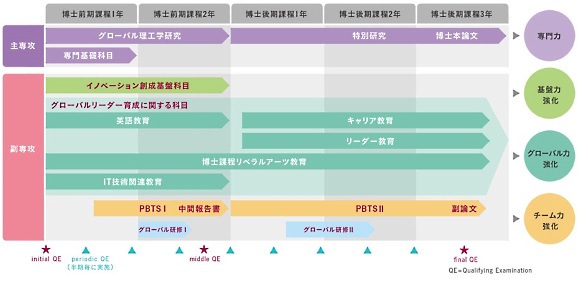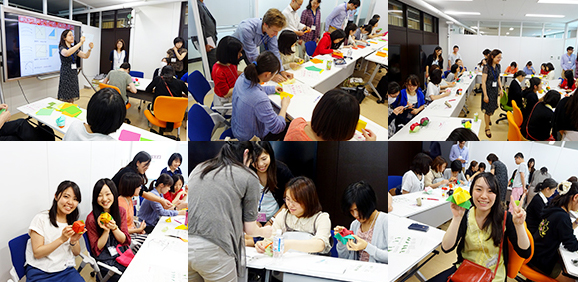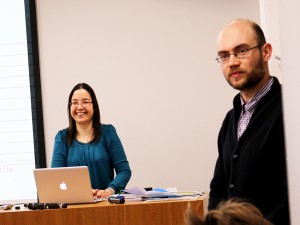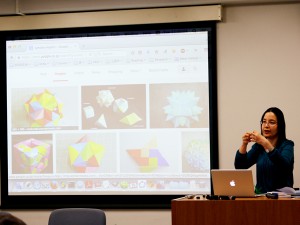The 1st Lunch Seminar
On February 10th (Tuesday), we had the first instalment of the Leading Center Lunch Seminar by Prof. Ghourabi, a member of the Center from the field of Information Science.
The main goal of this seminar is to promote the understanding of the research activities done at the Centre, both to the benefit of students and other researchers from the University. You may also forward this email to anyone you think might be interested.
=================
Date and Time: Tuesday, February 10th, from 12:20.
Place: 理学部会議室 (Science Building 3, Room 207~209)
Speaker: Fadoua Ghourabi (Information Science)
Title:
Solving and Proving Origami Geometric Constructions with Eos System
Abstract:
Origami, the art of paper folding, has fascinated many people because of its beauty and its utility in everyday life. Origami is also used as a tool for constructing geometric shapes. One of the foundational studies of the origami geometry is the basic fold operations defined by Huzita in 1989. These operations are simple since they can be performed by hand, but powerful enough to solve polynomial equations up to degree three. Consequently, they allow pertinent geometric constructions.
I have been involved in the development of a computational origami system, called Eos. Origami geometric problems are tackled in Eos in two phases; performing the geometric construction and checking the correctness of the construction, i.e. proving. Throughout the construction, the origamist interactively folds and unfolds the origami, and manages the constructed points and lines. Eos system generates algebraic constraints and solves them in order to determine the fold lines along which the origami is folded. Eos system implements Huzita’s basic fold operations as well as extensions with multifold and conic sections. In the proving phase, the origamist specifies the geometric properties to be established. Together with the geometric assumptions that are accumulated during the construction by Eos, the proposition to be proved is formulated. Then, Eos calls an appropriate proof engine, e.g. Groebner basis, to prove. During my presentation, I will show the construction and proof of Morley’s triangle as an illustration of Eos’s approach to origami geometry.







